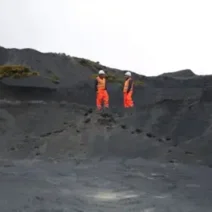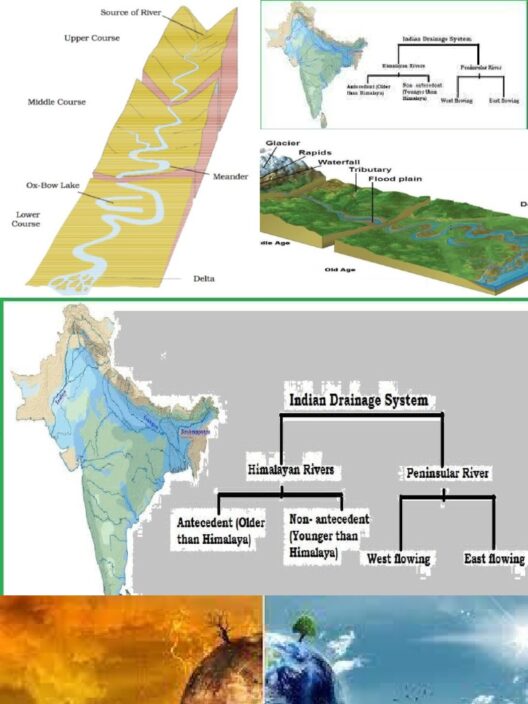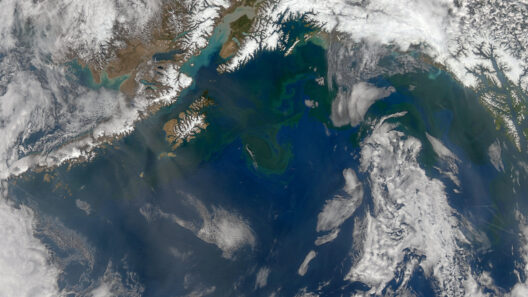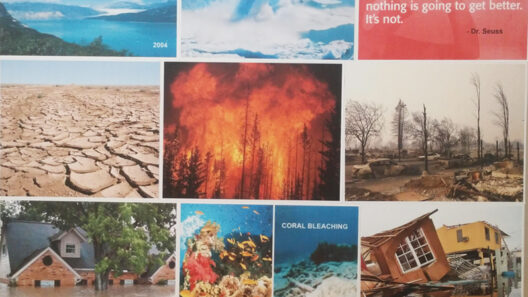In a world increasingly grappling with the adversities of climate change, one might wonder why heavy snowstorms seem to occur in places not typically characterized by wintry landscapes. The paradox of snow in warm areas beckons an exploration into the intricate relationship between global warming and weather phenomena. This inquiry is not merely an academic exercise; it resonates deeply with our understanding of climate dynamics and the erratic nature of atmospheric behaviors.
Global warming, in its essence, refers to the long-term increase in Earth’s average surface temperature due to human activities, primarily the emission of greenhouse gases. As the planet warms, one might assume that regions accustomed to balmy climates would remain insulated from winter’s grasp. However, this presumption overlooks a fundamental tenet of climate science: warming doesn’t eliminate cold; it alters the behavior of cold fronts and moisture-laden air masses, leading to unexpected weather outcomes.
One might liken this phenomenon to an orchestra, where every musician must adapt to the conductor’s tempo. As the atmosphere warms, it orchestrates climate patterns in unexpected ways. The melting of polar ice caps and glaciers releases vast amounts of fresh water into the ocean. This alteration in salinity can disrupt ocean currents, which in turn influences atmospheric circulation patterns. As such, the infusion of warm air into typically cold regions can lead to the dislodging of arctic air masses, resulting in unusual snowstorms in unconventional locales.
Consider the year 2021, when parts of Texas, usually known for its sweltering summers, found themselves buried under a blanket of snow. The state’s power grid, unprepared for such a deluge, illuminated the fragility of systems in the face of climate anomalies. This event served as a stark reminder that climate change does not conform to our expectations; rather, it challenges our perceptions of what is possible.
In examining the tumultuous relationship between warming and winter weather, it becomes imperative to explore the notion of atmospheric rivers. These are narrow corridors of concentrated moisture in the atmosphere, carrying water vapor from tropical regions to more temperate zones. When these rivers encounter cold air, the results can be spectacular and, simultaneously, catastrophic. The interplay between warmth and cold creates an enticing metaphorical dance, where the elements waltz across the sky, chaining together disparate weather patterns into an intricate tapestry of precipitation.
Such dynamics underscore a crucial aspect: the unpredictability of climate change consequences. The warming world does not uniformly raise temperatures; it creates a stage where extremes become the norm. The dichotomy of warm and cold no longer adheres to established boundaries. This can yield an increase in both heatwaves and snowstorms, demonstrating the capricious nature of our climate system. Indeed, a warmer climate can actually enhance the potential for heavier snowfall, especially in mid-latitude regions during the winter months.
As temperatures increase, the atmosphere can hold more moisture, enabling storms to incorporate larger volumes of water. Hence, when storms do occur, they are likely to be more intense. This phenomenon, occasionally referred to as the “snow paradox,” illustrates how a warming environment can foster conditions conducive to both snow and rain in places that traditionally experience milder winters.
Additionally, consider the jet stream, the powerful air current that dictates much of the weather in the mid-latitudes. A warmer Arctic can weaken the jet stream’s typical flow, allowing it to meander southward. When this happens, it can trap cold air masses in regions unaccustomed to frigid conditions. The result? Extreme snowfalls in typically warm areas. This shift in the atmospheric conveyor belt raises questions about weather predictability and agricultural planning, emphasizing the far-reaching implications of climate change.
Moreover, the growing prevalence of climate change-induced weather phenomena points to an urgent need for resilience and adaptation strategies. Societies must evolve to address the anomalies that global warming may impose upon them. Infrastructure must be assessed and fortified against the unpredictable whims of this new climate reality. Urban planning, transportation systems, and emergency response protocols need a reconfiguration that acknowledges the possibility of unexpected weather extremes.
At its core, understanding the relationship between global warming and unexpected snowfall in warmer regions serves not only as a scientific inquiry but as a clarion call for action. The delicate balance of our climate is a complex web woven from myriad threads, and every minor alteration can catalyze profound consequences. The snowfall in warm zones encapsulates the unpredictability of climate change, reminding us that tomorrow’s weather may bear little semblance to today’s climate norms.
Though the multifaceted nature of climate dynamics can render it daunting for many, it serves as a powerful motivator. It reveals how interlinked our global systems truly are. Just as a single drop can create ripples across a pond, every action taken toward sustainability contributes to a collective response against the looming threat of climate change. Each snowfall—whether in areas accustomed to winters or not—becomes an emblematic representation of a climate in flux, urging individuals, communities, and nations to embrace a renewed commitment to preserving our planet’s fragile equilibrium.
As we step forward into a future marked by climate uncertainty, integrating knowledge with action becomes paramount. The mysteries of global warming and its effects, sometimes as bewildering as unseasonal snowfall, require a unified response. Only then can hope prevail amid the tempest that climate change conjures.








